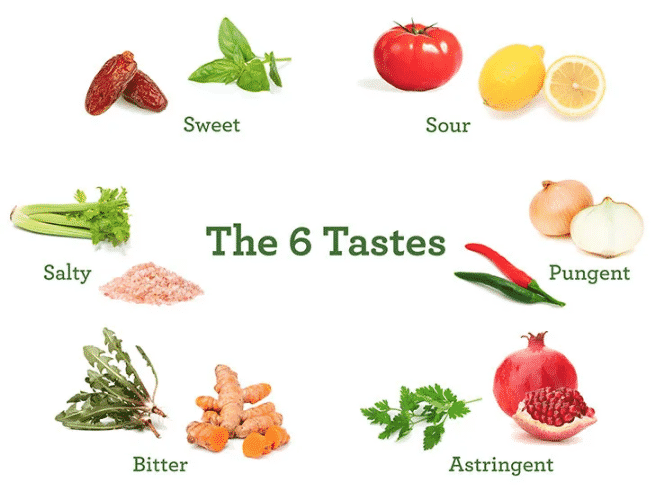‘I have a sweet tooth’, ‘I love spicy food’, ‘Tangy flavors are my thing’, and many such personal tastes in food define people’s palette. But would a person with a sweet tooth relish only that taste? Can one survive only on spicy food? Don’t we need other flavors to balance our favorite flavors? Ever thought what it would be like if all food tasted either sweet, spicy, salty or tangy? Even if one of these flavors were are favorite? Not a very pleasant thought, right?
Ayurveda, the ancient science of healing, from India talks about the six main tastes or ‘rasas’ in food and indicates that health and well being are a balance of these rasas, all of which we should try and include in every meal.
The literal meaning of the word ‘rasa’ in Sanskrit is taste but it has several other meanings like juice, experience, eagerness and lifeblood. Rasa is literally our lifeblood [Rasa Dhatu] and thus determines every aspect of our being in body, mind and spirit.
As per the classic texts the taste perceived through the tongue is the primary taste or Pradhana Rasa. The taste experienced after a short period of time is called Anu Rasa or Uparasa or secondary taste. Eg the taste of a dry drug is Pradhana Rasa and the taste of the wet drug is considered as Anu Rasa. The Rasa and Anu Rasa concept is based on the taste threshold.
These six important Rasas, as per Ayurveda are: Sweet, Salty, Sour, Pungent, Bitter & Astringent.
These tastes originate from the five elements of nature and transmit their properties. Ayurveda considers the rasas or tastes not just as something to be enjoyed while eating but also as a tool for healing.
Will talk about these six tastes a bit over the next week.
Namaste!
Neelanjana Bharadwaj
Yoga Expert
neel_bharadwaj@yahoo.com
Instagram: – yoga_me_and_more

